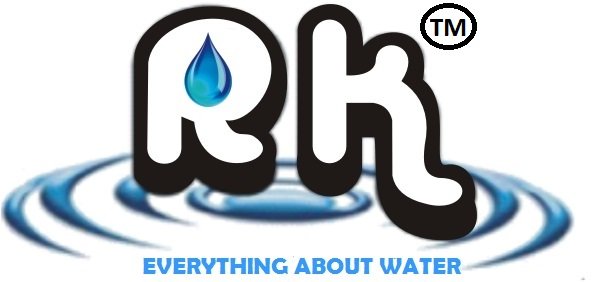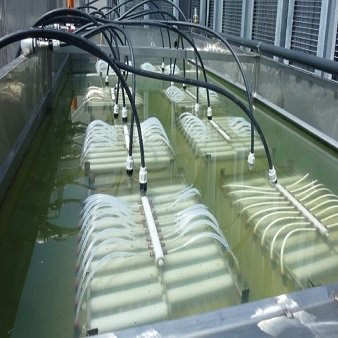Membrane Bio Reactor (MBR) technology is characterized by a combination of biological wastewater treatment (WWT) and membrane separation, by which biomass can be retained in the system without conventional gravity sedimentation. This leads to well-characterized advantages of the technology over conventional activated sludge processes, including smaller reactor footprint, excellent effluent quality, and smaller sludge production
A MEMBRANE BIOREACTOR (MBR) is a process which combines a microfiltration or ultrafiltration membrane unit with a suspended growth bioreactor, and is now widely used in both municipal and industrial Waste Water Treatment Plants (WWTPs).
1) Bioreactor:
In a wastewater treatment process, a bioreactor is specifically-designed chamber to support a biologically active environment, namely where bacteria and protozoa (the so-called biomass) can grow and consume some (or all) the substances within the raw wastewater.
They can be aerobic (to remove organic matter and oxidize ammonia to nitrate), anoxic (to remove nitrogen from nitrates to nitrogen gas) or anaerobic (to remove organic matter), depending on the presence of oxygen and nitrates or their absence. Typically, membranes are installed after aerobic or anaerobic bioreactors (respectively, the MBR and the An MBR processes).
There are three types of bioreactors:
- Suspended growth bioreactors, where the biomass grows into flocs;
- Attached growth (or biofilm) bioreactors, where the biomass grows attached to carriers;
- Hybrid bioreactors, which combines suspended and attached growth.
Typically, suspended growth bioreactors are these ones used for MBR processes. If properly designed, hybrid bioreactors can be used as well.
2) Membranes:
In the MBR process, membranes act as a solid-liquid separation device, keeping the biomass within the bioreactor before discharging the treated effluent to the nature. Basically, they take the place of clarifiers used in the conventional activated sludge (CAS) process.
Both micro- (MF) and ultrafiltration (UF) membranes can be used in MBR applications. Typically, UF membranes are the preferred choice because of their superior separation characteristics (thus, being able to remove some colloids and viruses as well) and lower fouling tendency (because of the smaller pore size, they have a lower risk of pore clogging).
There are three types of membrane geometries used for MBRs:
- Hollow fiber (HF);
- Flat sheet (FS);
- Tubular (or multi-tubular, MT).
Other configurations, such as spiral-wound (SW), are not suitable to MBR applications because of their sensitivity to suspended solids contents.
RK Water designs, integrates and installs MBR system using both flat sheet type membranes and hollow fiber membranes based on system requirement and client’s preferences.
BENEFIT:
- Smaller footprint (new WWTPs) or higher hydraulic throughput (existing WWTPs)
- High-quality effluent, free of bacteria and pathogens
- Various technologies available – Flat Membrane, Hollow Fibres, Forced Cleaning
- Modular skids available, hence expansion is easier
- Clear permeate water produced thereby reducing filtration step
- The system operates at a higher MLSS of 8000 – 15000 mg/l and thereby reduces the footprint of aeration tanks in comparison to Conventional Activated Sludge Process. It further obliterates the need of secondary clarifier thereby further reducing the overall footprint of the Biological Treatment system
- Can be fed directly for RO treatment. Avoids requirement of pressure filtration units/ Ultrafiltration.
APPLICATION :
- Municipal Sewage
- Industrial waste water
- Landfill leachate
- Grey water
- Food & Beverage waste
- Other biological waste




